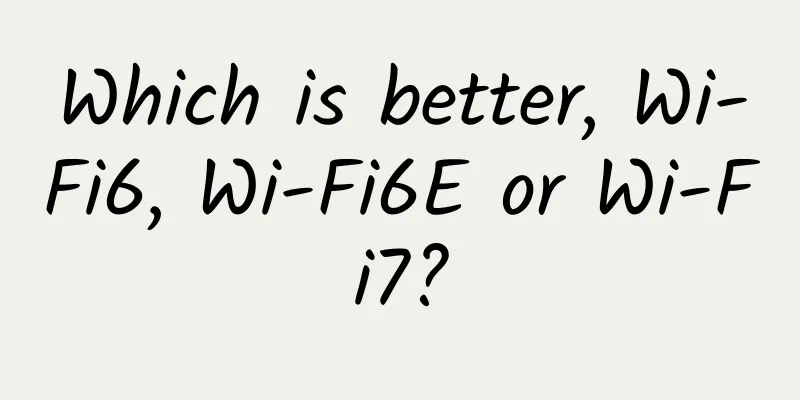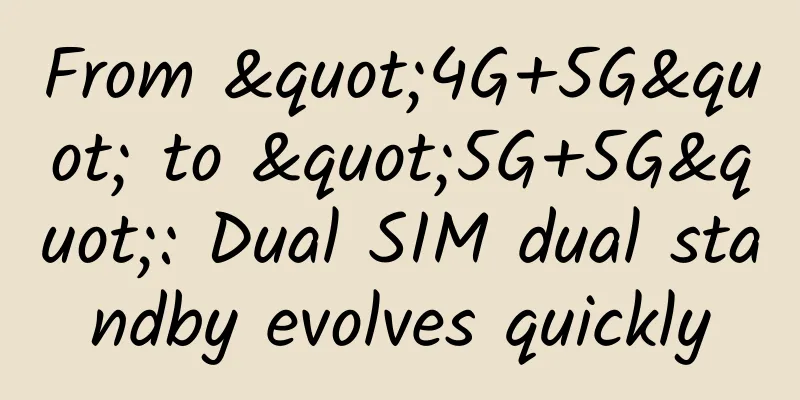Which is better, Wi-Fi6, Wi-Fi6E or Wi-Fi7?

|
With the popularity of Wi-Fi 6 and Wi-Fi 6E, a new Wi-Fi standard is coming. The final Wi-Fi 7 standard should be officially released in early 2024. In fact, devices that support Wi-Fi 7 have begun to hit the market. For anyone looking to buy a new router in the coming months, the choice is a vexing one. Like all major upgrades before it, Wi-Fi 7 brings faster data rates, lower latency, higher bandwidth for more simultaneous connections, improved security, and more improvements. However, all this comes at a price. Routers with Wi-Fi 7 will naturally be more expensive than those with older Wi-Fi standards. Prices for such routers are also likely to drop. So is Wi-Fi 7 worth the extra money? How much of a difference does Wi-Fi 7 bring to the home internet experience compared to Wi-Fi 6 and Wi-Fi 6E? Let’s take a detailed look at the specs, features, and speeds of the three Wi-Fi standards and find out. Most of the specifications of Wi-Fi 6 and Wi-Fi 6E are the sameAs we probably know, Wi-Fi standards have historically had rather confusing and complex technical names. While the industry has now settled on these simpler names, the classic technical terms still exist. Wi-Fi 6 and Wi-Fi 6E have the same name (802.11ax), while Wi-Fi 7 is 802.11be. Why do Wi-Fi 6 and Wi-Fi 6E have the same technical name? That's because there is not much difference between the two. The latter is an extension of the former, supporting a third 6GHz band in addition to the existing 2.4GHz and 5GHz frequencies. It also provides all the features of Wi-Fi 6 on the third band. The benefit of this is less congestion in crowded networks. Both Wi-Fi 6 and Wi-Fi 6E offer 160MHz channel width and maximum speeds of up to 9.6Gbps. Wi-Fi 6E adds the 6GHz frequency, which increases the speed of short-distance connections. However, the peak theoretical speeds are the same. They also have the same 1024-QAM (quadrature amplitude modulation), which determines how data is packaged and transmitted on these radio frequencies. Higher QAM allows more data to be transmitted wirelessly. Wi-Fi 5 runs at 256-QAM (peak speed 6.9Gbps). It struggles to transmit higher-quality content, such as 4K video, which requires a lot of data to be transmitted quickly. Wi-Fi 6 and Wi-Fi 6E also increase the number of spatial streams from 4 in Wi-Fi 5 to 8. This means you can connect up to 8 devices on the same network at the same time without losing speed. However, we still only get a single access point. In other words, devices can only transmit data over one frequency (2.4/5/6GHz). Some devices offer smart connect features that automatically switch transmissions to the best available frequency. Last but not least, both Wi-Fi 6 and Wi-Fi 6E offer WPA3 security, which is the latest Wi-Fi security standard. Wi-Fi 7 upgrades almost everythingWhile Wi-Fi 6 and Wi-Fi 6E offer some notable upgrades over Wi-Fi 5, the upcoming Wi-Fi standard is a game-changer on almost every level. Wi-Fi 7 upgrades nearly everything on top of the existing standard. Despite keeping the same three frequencies (the higher frequencies have shorter ranges), throughput speeds are improved several times over the previous generation. The final Wi-Fi 7 standard has not yet been officially released, so we don't have exact numbers. But there are reports that the theoretical peak speed will exceed 30Gbps, and may even exceed 40Gbps. This is thanks to improvements in QAM, bandwidth, and more. Wi-Fi 7 also doubles the bandwidth to 320MHz for improved efficiency. The number of spatial streams has also doubled (16), allowing more devices to enjoy the same Wi-Fi speed at the same time. As we move into smart homes where everything is connected, this improvement will provide high-speed connections for all devices. If there is network congestion or latency, Wi-Fi 7 provides MLO (Multi-Link Operation). In simple terms, MLO means multiple access points. It enables connected devices to send and receive data simultaneously across different frequency bands and channels, avoiding potential interference with other connections on the network. All these improvements are enough to take the wireless Internet experience to a new level. Whatever the need, Wi-Fi 7 will do better than Wi-Fi 6. That's why Wi-Fi 7 is also known as 802.11be EHT, where EHT stands for Extremely High Throughput. The new Wi-Fi standard is said to deliver lightning-fast speeds while upgrading almost every other aspect of wireless Internet connections. This should reduce latency and reduce network congestion compared to before. All of this while improving the security of connections and connected devices, with Wi-Fi 7 expected to bring the security of WPA4. So should you buy a Wi-Fi 7 router? The answer to this question is not a simple yes or no. While Wi-Fi 7 is a significant upgrade over Wi-Fi 6 and Wi-Fi 6E, we might be surprised to learn that most electronic devices in use today are limited to Wi-Fi 5. Some of the latest gadgets have Wi-Fi 6 or Wi-Fi 6E, while very few have Wi-Fi 7. Of course, Wi-Fi 7 is backward compatible, so Wi-Fi 5 devices can still connect to Wi-Fi 7 routers. However, they will not enjoy the benefits of the new standard. Wi-Fi 6E is already able to provide reliable Internet connections for an average home with about 40 devices, including smartphones, TVs, watches, smart refrigerators, security cameras, doorbells, and other IoT devices. Wi-Fi 7, on the other hand, is best suited for commercial spaces. Our never-ending quest for higher-quality content, digitization, and smarter devices may eventually make Wi-Fi 6E unable to handle it all, but as it stands, Wi-Fi 7 is a bit overkill for the average home. |
<<: The past and present of ultra-low latency live broadcast technology
>>: What exactly is semantic communication?
Recommend
Worth learning! 10 good habits of network administrators
【51CTO.com Quick Translation】I have been a comic ...
The four major telecommunications operators may realize free roaming settlement in rural areas through resource peer-to-peer exchange
In response to the question of how the four major...
The 7 most in-demand tech jobs of 2018 — and how to hire them
From data scientists to data security experts, th...
VMISS adds Los Angeles CN2 GIA line VPS with 20% discount starting from 4.8 CAD/month
VMISS has recently added a VPS host on the CN2 GI...
Easy to understand, this article will introduce you to the HTTP protocol?
1. What is http? Http protocol is Hypertext trans...
Why choose NB-IoT when there are so many standards?
The need for communication is indispensable in ou...
UUUVPS: 60 yuan/month-1GB/30GB/4M/Hong Kong CN2 line
UUUVPS is now holding a three-year anniversary ev...
Cybersecurity risks of smart devices
Many people don’t consider the risks that smart d...
Operators must solve ten problems before they have a chance to defeat WeChat
WeChat's powerful social functions have repla...
Megalayer: Hong Kong/Philippines/US VPS annual payment starts from 159 yuan, CN2 line optimized bandwidth
Megalayer has been shared several times in the tr...
165 million! China Mobile’s 5G user number announced, is 4G really outdated?
[[377452]] On January 20, China Mobile announced ...
WonderShaper: Network card speed limit tool
1. What is WonderShaper WonderShaper is a tool fo...
The Legend of Network Protocols (I): ARPANET
The birth and development of the Internet is a ty...
Technical details: Basic principles of IPSec VPN
IPSec VPN is a technology with a very high click ...









